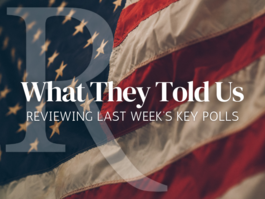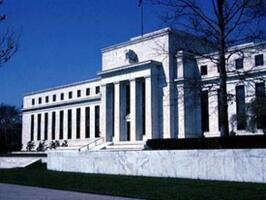Is Bernanke Wise Enough to Exit?
A Commentary By Lawrence Kudlow
Fed head Ben Bernanke went before Congress this week with his midyear update on monetary policy and the economy. In so many words, the former Princeton economics professor is taking credit for averting the collapse of our financial system; is cautiously optimistic about economic recovery by year-end and 2 to 3 percent growth in 2010; and says he has the tools and wisdom for a carefully crafted liquidity exit strategy that will prevent future inflation and more asset bubbles.
Do we believe him? Is he credible? Or is this a triumph of hope over experience?
Before, during and after Bernanke's testimony, a flood of corporate-earnings reports beat Wall Street expectations, sending stocks into an unexpected summer rally that has virtually beaten the bears into submission. A third-straight rise in the Index of Leading Economic Indicators points emphatically to recovery and an end to the recession.
Strong profits at companies like Apple, Caterpillar, Merck and Starbucks suggest that "someone, somewhere, somehow is spending money," in the words of Wall Street blogger Douglas McIntyre. Or maybe the Fed's liquidity mustard seeds are finally germinating.
Yes, nearly 10 percent of the workforce is unemployed. But the other 90 percent who are still working -- along with the companies that employ them -- are out there taking risks and going about their daily chores. Think of them as recovery canaries in the coalmines of the economy.
So I say amen to McIntyre, which means Bernanke should be getting ready to implement his exit strategy.
In ballpark terms, the Fed pumped $1 trillion of new cash into the economy to stop the financial crisis last fall. So far in 2009, the Fed's balance sheet has flat-lined; no new money has been created. That, by itself, could spell the beginning of an exit strategy.
In a much-ballyhooed editorial in the Wall Street Journal this week, Bernanke said that while a near-zero interest rate will be maintained for an extended period, the Fed is on guard to stop potential inflationary pressures. And he correctly noted that most of the Fed's newly created cash has been deposited by the banks as reserve balances at the Fed itself.
These "excess reserves" are way more than the banks need to keep at the Federal Reserve. And when banks re-employ these reserves with renewed lending, Bernanke says he'll have a signal to gradually take restraining actions. The Fed can drain the excess cash by selling Treasury securities, or it can pay higher interest on the reserve balances themselves.
I find it very interesting that these so-called excess reserves are already coming down. Last May they were running close to $850 billion, which is an astronomical number. But in the last few weeks they've dropped to $700 billion. This may suggest that the economy's animal spirits are awakening from their slumber.
My hope is that Bernanke & Co. actually uses the excess reserves as a policy variable, rather than as something to be manipulated by the interest charged for those reserves. But the bigger question for future Fed policy may be whether the government bank employs forward-looking market-price indicators to gauge future inflation and its own operations.
These consist of the dollar, commodities (including gold and energy) and Treasury bond rates.
Bernanke has a poor track record here. As Alan Greenspan's co-pilot in the early 2000s, Bernanke deliberately dissed the dollar and commodities in Fed meetings as potential inflation influences. So from 2002 to 2005, an over-easy Fed bubbled up housing, energy and commodities, allowed the dollar to sink, and wound up moving the consumer price inflation rate from 1 percent to 6 percent, all of which helped sink the economy into the Great Recession.
As chronicled in the Wall Street Journal editorial pages, these Bernanke-sponsored monetary errors weren't the result of stupidity, but of using the wrong targets -- such as the unemployment rate, resource-capacity underutilization or the difference between actual and potential GDP. These statistical measures are highly suspect, whereas market prices are the real McCoy.
So right now, if the Fed targets the unemployment rate and the recessionary underutilization of economic resources -- as Bernanke suggested it might in his congressional hearing -- it is quite possible the central bank will repeat the very same mistakes it made in the early part of this decade.
Complicating matters, President Obama's massive spending-and-borrowing policies -- and the tax hikes to pay for them -- will significantly reduce the economy's ability to grow. This means that each dollar of Fed-created money becomes potentially more inflationary, just as it means unemployment will stay higher than usual.
I have no doubt that Bernanke and the Fed have the right tools to protect the consumer dollar. The question is: Do they have the wisdom?
COPYRIGHT 2009 CREATORS SYNDICATE INC.
See More Commentary by Lawrence Kudlow
See Other Political Commentary
Views expressed in this column are those of the author, not those of Rasmussen Reports.
Rasmussen Reports is a media company specializing in the collection, publication and distribution of public opinion information.
We conduct public opinion polls on a variety of topics to inform our audience on events in the news and other topics of interest. To ensure editorial control and independence, we pay for the polls ourselves and generate revenue through the sale of subscriptions, sponsorships, and advertising. Nightly polling on politics, business and lifestyle topics provides the content to update the Rasmussen Reports web site many times each day. If it's in the news, it's in our polls. Additionally, the data drives a daily update newsletter and various media outlets across the country.
Some information, including the Rasmussen Reports daily Presidential Tracking Poll and commentaries are available for free to the general public. Subscriptions are available for $4.95 a month or 34.95 a year that provide subscribers with exclusive access to more than 20 stories per week on upcoming elections, consumer confidence, and issues that affect us all. For those who are really into the numbers, Platinum Members can review demographic crosstabs and a full history of our data.
To learn more about our methodology, click here.


